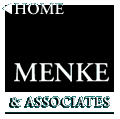
 |
|
| ESOP and Philanthropy | |
INDEX: 1. Overview 3. Benefits for Private Owners
4. Case Studies
CASE STUDIES
So that you might gain a clearer understanding of how the ESOP works in helping our clients to address and carry out their philanthropic agendas, we have included two case studies which should help to clarify the ESOP's role in accomplishing those objectives:
THE OUTRIGHT GIFT
Norm wanted to contribute a block of his privately-held company stock to a major eastern university. The institution was reluctant to accept privately-held securities because of the difficulties associated with both the valuation and the marketability of these assets. Menke & Associates designed and implemented an Employee Stock Ownership Plan (ESOP) for Norm's company. The installation of the ESOP provided the market for the privately-held stock and it ensured that the associated securities were evaluated according to applicable IRS regulations. The ESOP resolved the problems associated with liquidity and valuation of privately-held stock.
Once the ESOP was in place, Norm contributed $100,000 of his privately-held stock to the University. Because the ESOP established the market for Norm's stock, the University was able to turn around and sell the securities back to the ESOP in Norm's company, thus liquefying the securities in the University treasury.
THE PLANNED GIFT
Tom wanted to establish a legacy in his name for a missionary group with which he was associated. He also wanted to establish a plan to guarantee a lifetime income for himself and his wife.
Tom retained Menke & Associates to set up an ESOP for his company and he established a Charitable Remainder Income Trust (CRIT) for the missionary group.
Tom contributed a block of his privately-held stock to the charity to fund the CRIT, and he was able to take the present value of the gift as a current income tax deduction. The charity sold the block of stock back to the ESOP and received a Note in exchange. The Note to the charity is being repaid by the company's tax deductible contributions to the ESOP at Tom's company. Monies to repay the Note fund the lifetime incomes that the charity agreed (by virtue of the provisions in the CRIT) to provide to Tom and his wife.
Upon the deaths of both Tom and his wife, the charity will recognize the balance of the accumulated assets that remain in the CRIT.
Menke & Associates would be pleased to help you and your development or institutional advancement planning staff to gain a better understanding about ESOPs and the ways in which these financial tools can be used to increase the measure of support you garner from the private sector.
MENKE & ASSOCIATES CAN PROVIDE THE FOLLOWING
Specialized training for your development and institutional advancement staff:
In order to insure that you and your institutional advancement staff :
Menke & Associates will provide training to insure that your staff members gain an in-depth understanding about this important tool of corporate finance and how it could be utilized to increase the measure of support your institution receives from owners of closely-held companies.
Negotiation with existing prospects:
It is entirely possible that as a result of your ongoing fund-raising efforts, you may have identified prospective donors who are owners of privately-held companies. If those prospective donors wished to contribute privately-held stock to your organization, Menke & Associates would meet with those potential donors to decide (a) whether their companies might qualify for installation of an ESOP and (b) if so, to help them not only with installation of the ESOP, but also in carrying out the charitable agendas they wish to address for your organization.
New Prospect Identification and Cultivation:
Because of its marketing efforts over the last 20 years, Menke & Associates has become very adept in identifying and cultivating potential clients, who are qualified ESOP candidates. Menke & Associates would adapt this marketing expertise to help you to search for and cultivate those potential donors who wish to carry out their philanthropic agendas through installation of an ESOP.
To summarize:
Menke & Associates would be pleased to provide these or other specially designed services to you and your organization.
We would welcome the opportunity to meet with you in order to discuss the needs of your institution and the feasibility of designing a program to address your fund-raising objectives.
BOOKLETS
The ESOP Association, How the ESOP Really Works, (Washington, DC: The ESOP Association, 1992)
Laurence G. Lyon, The PRO -- Productivity SystemTM, (San Francisco: Menke & Associates, Inc., 1993)
John D. Menke, ESOPs Pros and Cons, (San Francisco: Menke & Associates, Inc., 1990)
PAMPHLETS
John D. Menke, ESOP: Pros and Cons of a New Type of Corporate Finance Plan, Reprinted with permission from Doors and Hardware, (San Francisco: Menke & Associates, Inc., 1990)
John D. Menke, ESOPs vs. PROFIT-SHARING PLANS, (San Francisco: Menke & Associates, Inc., 1987)
PERIODICALS
Gene Epstein, "The Participation Equation: Which Plan Makes Workers Work Best?" Baron's, December 5, 1994
Corey Rosen and Michael Quarrey "How Well is Employee Ownership Working?" Harvard Business Review, September-October, 1987, No 5., (Cambridge, Mass.: Harvard University Press)
BOOKLETS
Menke Titolo Capital Corporation, Management Buyout Strategies, Illustrative Case Histories, (San Francisco: Menke Titolo Capital Corporation, 1991)
Menke Titolo Capital Corporation, Strategic Buyouts, Advantages and Disadvantages, (San Francisco: Menke Titolo Capital Corporation, 1991)
PAMPHLETS
Glenn P. Laury, Passing the Torch: Deciding the Future of Your Business, (Mendham, NJ: Menke & Associates, Inc., 1993)
John D. Menke, ESOP: Uses, Advantages, Illustrative Case Histories, (San Francisco, Menke & Associates, Inc., 1990)
PERIODICALS
John Case, "Collective Effort," Inc., January-February, 1992
Edward J. Massa, "Strategic Planning: The Value of a Family Gift," Financial Planning, March, 1995
Stephen J. Simurda, "How to Make an ESOP Work," Family Business, Spring, 1992 |